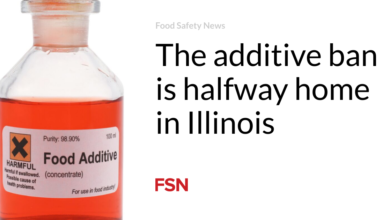Would You Switch a Patient’s Medication If You Knew the Cost?

— Optimizing price estimate alert design and logic should be a priority
by
Caroline E Sloan, MD, Foster R Goss, DO, MMSc, and Anna D Sinaiko, PhD
January 13, 2024
Sloan is a primary care physician and health services researcher. Goss is an associate professor of emergency medicine and clinical informatics. Sinaiko is a researcher and assistant professor of health economics and policy.
Put yourself into your patients’ shoes for a moment. Imagine you are visiting your primary care provider (PCP) today to follow up on your diabetes and blood pressure control. After a quick finger-stick test, you find out that your average blood sugar over the past 3 months has been much too high. Your doctor gives you some advice on how you can modify your diet, and then suggests that you take a new medication called dulaglutide (Trulicity).
The insurance you get through your employer isn’t very generous, and recently, you’ve been struggling to pay all of your copays. You worry that this additional medicine may not be affordable and that you’ll either have to do without it or cut back on other expenses in your life, like eating healthier food.
Despite having insurance, many people in the U.S. run into predicaments like this. In fact, half of people report struggling to afford their medical care and 31% of patients who have a prescription drug have skipped or cut back on at least one of their medications because of the cost.
Reluctantly, you ask your doctor, “So, how much will the medicine cost?” Until recently, this question could only be answered for patients without insurance. Doctors could look up medication prices on GoodRx or on the websites of direct-to-consumer pharmacies, but for those who had insurance, there was no straightforward way to find the exact copays.
Since 2021, clinicians practicing at many large health systems have the option to estimate the prices of the medications they prescribe for patients with private insurance or Medicare. That year, CMS began requiring that Medicare drug plans provide price estimates to prescribing clinicians. These price estimates, which are generated via applications called Real-Time Benefit Tools (RTBTs), account for each patient’s specific pharmacy coverage, deductible, copays, and preferred pharmacy. They are integrated into electronic health records (EHRs), so clinicians can access them when they’re in the room with a patient.
These tools can also alert clinicians at the point of prescribing about any lower-cost alternatives that may exist. The alternatives might be different medications in the same drug class, the same medication at a different pharmacy, the same medication for a different number of days (e.g., 30-day supply vs 90-day supply), or the same medication but a different formulation (e.g., tablet vs capsule).
We recently sought to understand whether these tools were leading clinicians to change their medication orders for patients. Previous research has shown that when clinicians become aware of their patients’ financial constraints, they often feel a moral and professional obligation to help patients identify solutions for lowering costs, either through financial assistance (e.g., coupons, charity care) or by finding medications that cost less. RTBTs have the potential to help clinicians find out more about how much their patients are paying for their medications and come up with practical solutions that may lower patient costs.
Our group examined how often PCPs at one large academic health system changed their medication orders when the RTBT alerted them to the existence of a lower-cost alternative. Over the course of 3 years, the RTBT alerted 889 PCPs with price estimates for 181,887 medication orders. We found that overall, PCPs changed their orders only 12% of the time. On closer examination, we saw that PCPs were more likely to change their orders when patients’ cost savings were greater. As an example, for diabetes medications, PCPs changed their orders 11% of the time when cost savings were $5 or less; when cost savings were over $20, they changed their orders 16% of the time.
We were surprised to find that PCPs changed their medication orders so infrequently, even when the potential cost savings were quite high. This may have happened for a number of reasons.
First, RTBT price estimate alerts typically popped up when a clinician was attempting to sign a medication order. At that point in the visit, a clinician has likely already discussed the benefits and risks of their selected medication. Given how short and compressed primary care visits are, they may be reluctant to start discussing an entirely new option and risk getting behind schedule.
In fact, we found that when clinicians independently looked up an RTBT price estimate earlier in the visit, they were almost three times more likely to change their order. Second, a busy clinician may simply not pay attention to price estimates. Prior studies have shown that when clinicians get too many alerts, they do not fully acknowledge them, or even ignore them altogether. Third, 71% of RTBT alerts would have saved patients $5 or less.
Although in aggregate these alerts represent considerable savings, some patients may not be concerned with saving a few dollars per prescription, or alternatively, their PCPs may assume that is the case and dismiss the price alert without mentioning it. The latter scenario represents a major missed opportunity for improving patient access to care. Finally, some clinicians may not believe that the price estimates they are seeing are accurate or appropriate with respect to the patient’s current condition or stage of disease, causing them to dismiss the suggestions.
The fact that clinicians can now more easily find medication price estimates for patients with insurance represents an advance in efforts to increase price transparency in healthcare. This is information that both patients and clinicians say they want, and it can help clinicians answer questions about the affordability of new medications like dulaglutide.
Understanding the factors that contribute to clinicians sticking with versus changing their medication orders after price estimate alerts should be a priority for RTBT and EHR developers. Such information can inform efforts to focus RTBT design and logic for medicines where patient price information is most relevant, and allow for the greatest benefit while minimizing disruptions to clinical workflows.
Caroline E Sloan, MD, is a primary care physician and health services researcher at Duke University in Durham, North Carolina. Foster R Goss, DO, MMSc, is an associate professor of emergency medicine and clinical informatics at the University of Colorado – Anschutz in Aurora. Anna D Sinaiko, PhD, is an assistant professor at the Harvard T.H. Chan School of Public Health in Boston where she conducts research on health economics and health policy.


